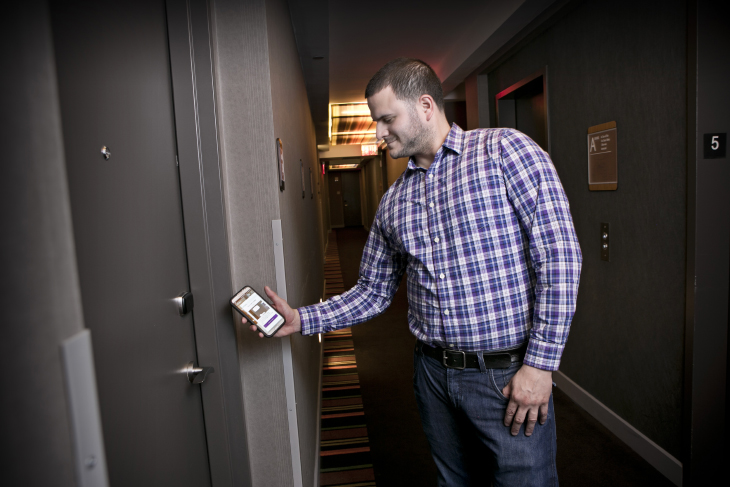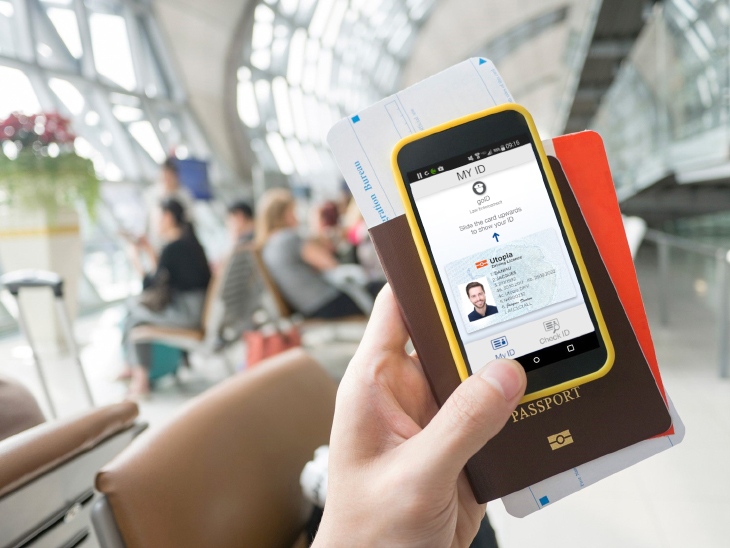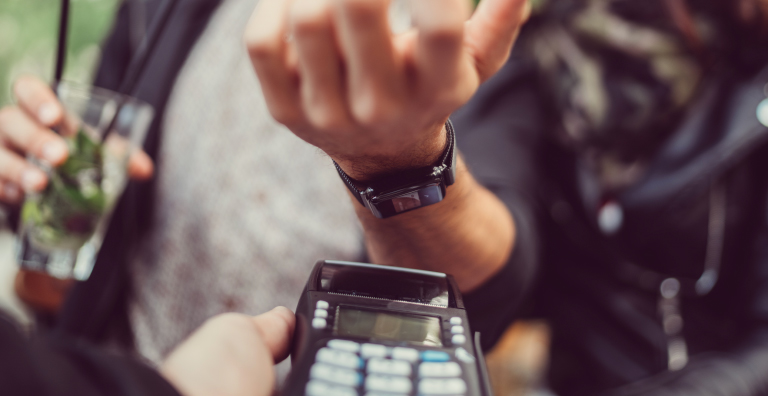How Digital Wallets Are Changing the Security Industry
Digital wallets offer individuals a new way to digitally authenticate their identities conveniently and seamlessly, including storing, organizing and verifying the identities we need in daily, digital interactions. In fact, emerging forms of digital identity are poised to reshape nearly every aspect of our lives. Digital wallets can help people not only to transact safely, but to travel freely and work productively.
Here we’ll explore digital wallets, the evolution of its capabilities, what’s driving the shift and what it means for the security industry.
What Is a Digital Wallet?
A digital wallet is technology that can be used on an internet-enabled device, including smartphones and computers, and allows the user to securely store information like banking data or passwords to make safe transactions online, in apps or via peer-to-peer payments. Some digital wallets may even charge fees, such as Venmo’s instant transfer feature that assesses 1.5% of the total transaction to complete the request.
Are Digital Wallets and Mobile Wallets the Same?
There is a difference between digital wallets and mobile wallets. A mobile wallet is a specific type of digital wallet technology accessible through a mobile app. Mobile wallets use wireless capabilities, including near-field communication protocol (NFC) and Bluetooth® (BLE) to connect with another device, such as a reader. A mobile wallet can be used for e-commerce payments, to transfer money between friends or to make contactless mobile payments. Mobile wallets can also be loaded with just about anything you would put in a physical wallet, like concert tickets, loyalty cards, employee badges, flight boarding passes or even keys to lock or unlock a car.
An easy way to think about the difference? Apple Pay vs. Apple Wallet. Or for the Android users out there, Google Pay vs. Google Wallet. Apple Pay and Google Pay are safe ways to make secure purchases in stores, in apps and on the web, making them digital wallets. Apple Wallet and Google Wallet are the places where you store your credit or debit cards so you can use them with Apple Pay or Google Pay, making them mobile wallets.

The Changing Identity Landscape — Digital Identity Verification
What’s driving the shift to digital identity verification? There are a few forces at work:
- Consumer demand for convenience, automation and contactless transactions is pushing innovation in the digital wallet space. Not only did the infrastructure to support digital transactions grow over the last several years, but the adoption of mobile wallet apps also grew with 32 percent of users having three or more mobile wallets downloaded on their smartphones.
- Mobile convergence and the multitude of converged devices are facilitating interoperability and seamless, optimized connectivity for users. As we continue to shift to a more digital world and individuals expect a seamless mobile experience, this consolidation of networks is set to unleash the next generation of applications and use cases.
- Legislation, regulations and standards across the globe are paving the way by providing a consistent legal framework for accepting digital identities. One such piece was passed in Europe — the eIDAS Regulation — as a key enabler of cross-border digital transactions.
- Digital wallets are adding new functionality. In 2021, Apple announced it was working with several states to roll out mobile driver’s licenses or state IDs for iPhone and Apple Watch to residents.
- Tech giants and startups are racing to create the go-to app for all digital identity verification needs in a single platform, from financial and insurance documents to health information and government IDs.
The Digital Wallet of the Future and the Implications for Security
Digital wallets are increasingly being used for new approaches to digital identity verification, but how are they expected to evolve? A range of emerging use cases helps to paint the picture of what digital wallets will be storing in the near future. It’s expected that digital wallets will be used in the management and access of medical records, travel documents, insurance and investment information — in addition to the broad adoption of government IDs and employee badges.

As capabilities for digital wallets and digital identities continue to expand, they are poised to have a substantive impact not only on our daily lives, but also on the security industry. In fact, security leaders should start thinking ahead to the next iterations of digital wallets and digital identities, and what considerations are key to the discussion.
What infrastructure is needed to fully embrace a connected, mobile experience?
The ability to use digital wallets rests with updated infrastructure, including NFC and Bluetooth Low Energy-enabled hardware. The issuance of digital identities requires a modern credentialing program with security management in the cloud. Defining what identity management means in the context of each business will help to create the right identity infrastructure, allowing for scalability in a more secure way and the adoption of the right mix of technologies, applications and processes to manage digital identities to meet the defined requirements.
What compliance is necessary and what communication is needed regarding how data is used and stored, or if privacy concerns are raised?
Digital identities and their different sources create unique multi-faceted personas and experiences along with a wealth of associated data. While there is value in utilizing collected data to offer better products and services to both customers and employees, those customers and employees likely see it differently. Data collection is a practice that can easily lead to mistrust and suspicion without transparency. According to a recent KPMG report, the U.S. population responds more favorably when they know exactly how their data is used. Digital identity systems should take into consideration regionally and globally relevant laws, regulations and industry standards. Privacy and security laws like General Data Protection Regulation (GDPR) highlight the shift in control and ownership of Personally Identifiable Information (PII) from the service provider to the user. This means time and attention should be dedicated to develop internal policies — especially those relating to data privacy, data protection and fraud prevention.
What opportunities exist not just now, but in the future, to organize around service models and service-led growth, such as SaaS-delivered identity?
The use of digital wallets is now bound to higher level initiatives than just purchases. In fact, a recent article by Deloitte points to identity as the center of the digital experience. Organizations who utilize identity as a frame for digital transformation can overcome barriers to adoption, opening the opportunity to take full advantage of digital identity verification and the use of digital wallets. This necessitates security management moving to the cloud and the infrastructure updates, including hardware, to support it. Physical security, operations and IT teams will need to collaborate and speak the same language in order to determine program objectives and develop a business case, including payback periods and total ROI. It’s a critical exercise to obtain the budgets needed for such projects, especially in large organizations. By engaging on the success criteria and onboarding the right consultants, partners and integrators for the implementation, security teams can deliver on the end goal, including measuring and improving on the success of the initial deployment.
The Bottom Line
Today, people are much more likely to download a mobile wallet from the app store than to purchase one from a brick-and-mortar one. The evolution of technology, together with consumer demand for a consolidated, convenient experience and a growing body of legislation and standards are enabling digital wallets to reshape digital identity verification from access control to financial transactions and beyond. With a wide reach and daily touchpoints, the digital wallet category is poised to have a substantive impact on the way we interact with our homes, with our employers and workplaces, with the tourism industry and even with our governments — but only if new solutions can deliver on reliability, scale and convenience in balance with security and privacy.
Visit the HID security & identity trends blog for more insights on what’s happening in the security industry today.
Bevan has more than 20 years of experience in Smart Building technology, holding strategic roles in the build out of disruptive software product businesses and practices. His extensive background includes positions at Honeywell, Jibestream and McCann, working in the capacity of product leadership, enterprise sales and go to market. Bevan joined HID in 2020 as Product Marketing Manager responsible for the ongoing evolution of mobile access control solutions globally.
